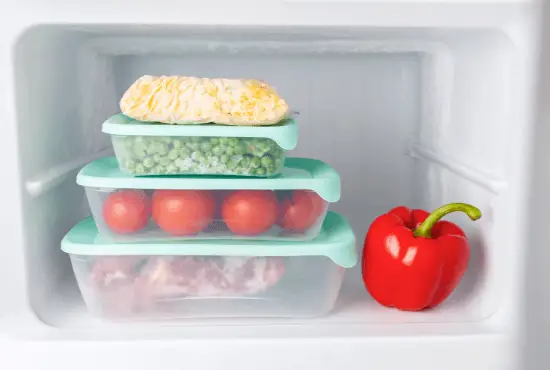You got a load of leftover frozen food and are clueless about avoiding its wastage or maybe you are reluctant to try out your favorite defrosted dish. It is not a matter of concern, as refrigerator thawing will solve all of your food safety struggles.
Before proceeding with defrosting, you might want to know about all the dos and don’ts of refrigerator thawing.
You can place your food in the fridge for safe thawing. It is most useful for situations when you want to refreeze the thawed food. Due to decreased level of air contamination, a refrigerator is a secure zone for defrosting your cooked/uncooked items. Once thawing is complete, use them per your requirement and avoid keeping the food for an extended time in the fridge.
Refrigerator thawing is simple and effective, and this article will guide you through all the involved steps.
Table of Contents
Thawing In A Refrigerator: The Safest Method To Defrost Frozen Food
Although there are a lot of different methods for defrosting your food, not all of them are safe.
You might have left your chicken in hot water to thaw while doing other chores. It may seem easy to do but, food health authorities strictly warn against it.
Similarly, leaving food on the counter all day is another common practice. But, both these procedures can lead to food-borne illnesses. It is because of frequent contact with open-air that can cause bacterial contamination.
So, to avoid such health risks and maintain the quality of your food, refrigerator thawing is the ultimate savior. When you thaw your food via this method, it reduces the chances of spoilage and microbial infestation.
How To Thaw Food In A Refrigerator?
Different food varieties require specific handling when you place them in the refrigerator for thawing. It is best to plan it ahead, as this method is lengthy and time taking. A large frozen item might take at least twenty-four hours to thaw completely.
Below is a detailed guideline on thawing various food groups in the refrigerator.
1. Protein-based food/meat
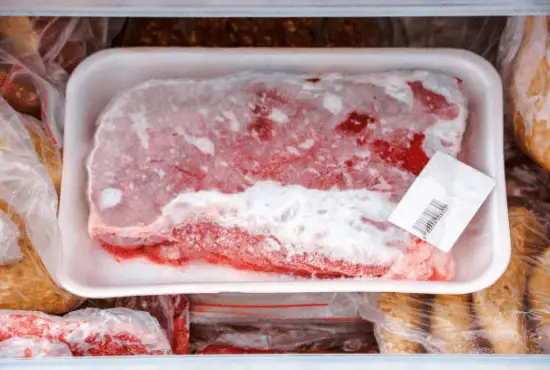
Meat is a frequently used food product but, it tends to perish quite rapidly if you do not handle it correctly. It is due to the meat’s protein-based nature.
So, to keep it tender and increase the shelf- life,
- Firstly, take your frozen meat out of the freezer and place it on a tray or a plate.
- The tray will prevent the water from dripping on other food items.
- Transfer it to the refrigerator immediately without any delay.
- Leave the meat to thaw overnight. An average size cut of meat or chicken takes a day to defrost.
- By the next day, you are ready to cook it.
- Besides, chunky cuts of meat can take up to 24 hours per five pounds to defrost.
- Once it thaws, try to utilize it between 3-5 days as an extended stay in the fridge can alter the taste and texture of the meat.
2. Fruits
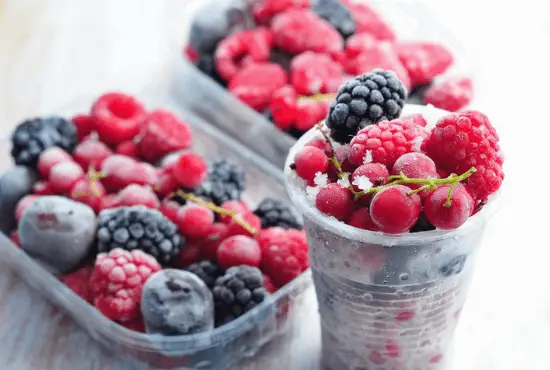
If you plan to defrost your frozen fruits, you need to be extra careful and gentle with their handling. As fruits consist of increased water levels, they often get mushy due to the formation of ice crystals.
- Take the required amount of fruits along with their safety packaging/ bags.
- Now, transfer them to the refrigerator. Avoid piling up other items on top of it.
- The fruits are delicate and can get squished under too much pressure.
- Let them thaw for some hours and use within a day or two
- Afterward, most fruit varieties might soon rot as they get soft and soggy.
3. Vegetables
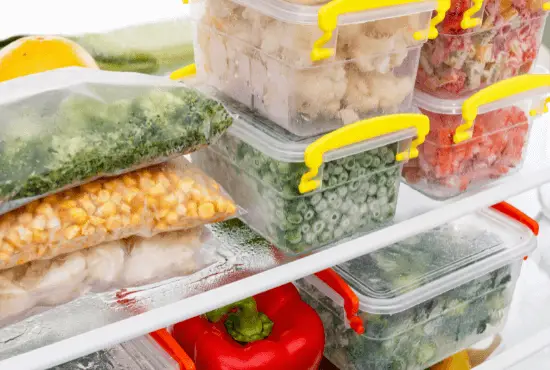
Frozen vegetables, cooked or uncooked, can thaw well in a refrigerator. You might want to defrost them in a microwave or countertop for quick results. However, they come with a lot of disadvantages and limitations.
To thaw vegetables in a fridge, leave them in there overnight.
They can stay there for three days before you finally cook and eat them.
Note that the time limit for cooked veggies is less and is around a day or two. So, it is best to use them as soon as possible after thawing.
4. Milk-based products
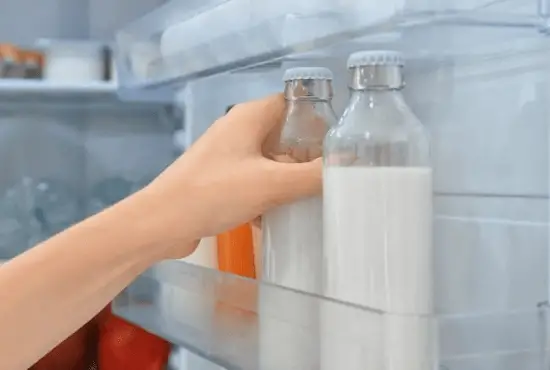
Dairy products are essential for maintaining a healthy and nutritious diet. But, they are usually prone to spoil fast. To keep them fresh and long-lasting, refrigerate them.
Milk takes about 24 to 36 hours to thaw fully in a fridge. This slow defrosting process is helpful as it keeps the milk at the required storage temperature. After thawing, give the bottle a shake before opening it. The milk tends to separate upon thawing. You can beat it with an immersion blender or an electric mixer to bring it back to the original consistency.
The refrigeration thawing also works well for breastmilk. It is because it requires to be free from all kinds of germs for the baby’s health. Thus, keeping it in the fridge is a much safer option compared to other thawing techniques.
Similarly, you can perform the same practice for cheese as well.
Place it on a plate, keeping it sealed in the packaging. It takes 24-48 hours to thaw, depending on the thickness of the cheese. Small slices can be left to thaw for 24 hours, while large bricks require around 48 hours minimum.
Why Thawing In A Refrigerator Is Best For Refreezing Food?
Most people prefer thawing their food in a microwave or hot water because they give instant results. However, these methods might not complement the refreezing process.
Once you thaw your food in a microwave, you have to consume it immediately. You cannot place the leftovers back in the freezer. If you do, it will yield no good results and spoil rapidly. The same is the outcome of other thawing techniques like placing in hot water, on the countertop, etc.
Thus, if you want to avoid unnecessary food wastage, go for refrigerator thawing. Although it takes more time than other methods, the benefits outweigh them.
Defrosting in a fridge significantly decreases the multiplication of bacteria inside the food. As a result, not only the food remains in a good state for a longer duration, it also is safe for consumption. You can then easily place the leftovers back in the freezer without worrying about rotting or spoilage.
How Long Can Thawed Food Last In The Refrigerator?
The period of the frozen-thawed food inside the fridge depends upon various factors. The average span is around three to four days, but it can increase or decrease.
Uncooked raw food usually last longer than cooked food. You can leave the cooked food for up to three days if the temperature remains constant throughout. To keep a record of how long something lasted in the fridge, put labels on it.
Uncooked protein like bacon can last as long as seven days after thawing.
The maximum span for fruits and veggies is between 3 to 4 days.
Similarly, butter and shredded cheese stay intact inside the fridge for more than a month. On the contrary, ready meals are good for about a day or two.
Conclusion
To sum up, thawing your food in a refrigerator is undoubtedly the best method out there. It allows the food to undergo freezing more than once, without altering its quality.
It also lowers the threat of getting food poisoning or other stomach-related diseases. By following the above-mentioned steps, you can thaw almost any type of food in your fridge.
Refrigerator thawing is a convenient way of increasing the shelf-life of your edible items. It is economical and helps in cutting down unnecessary food expenses.


